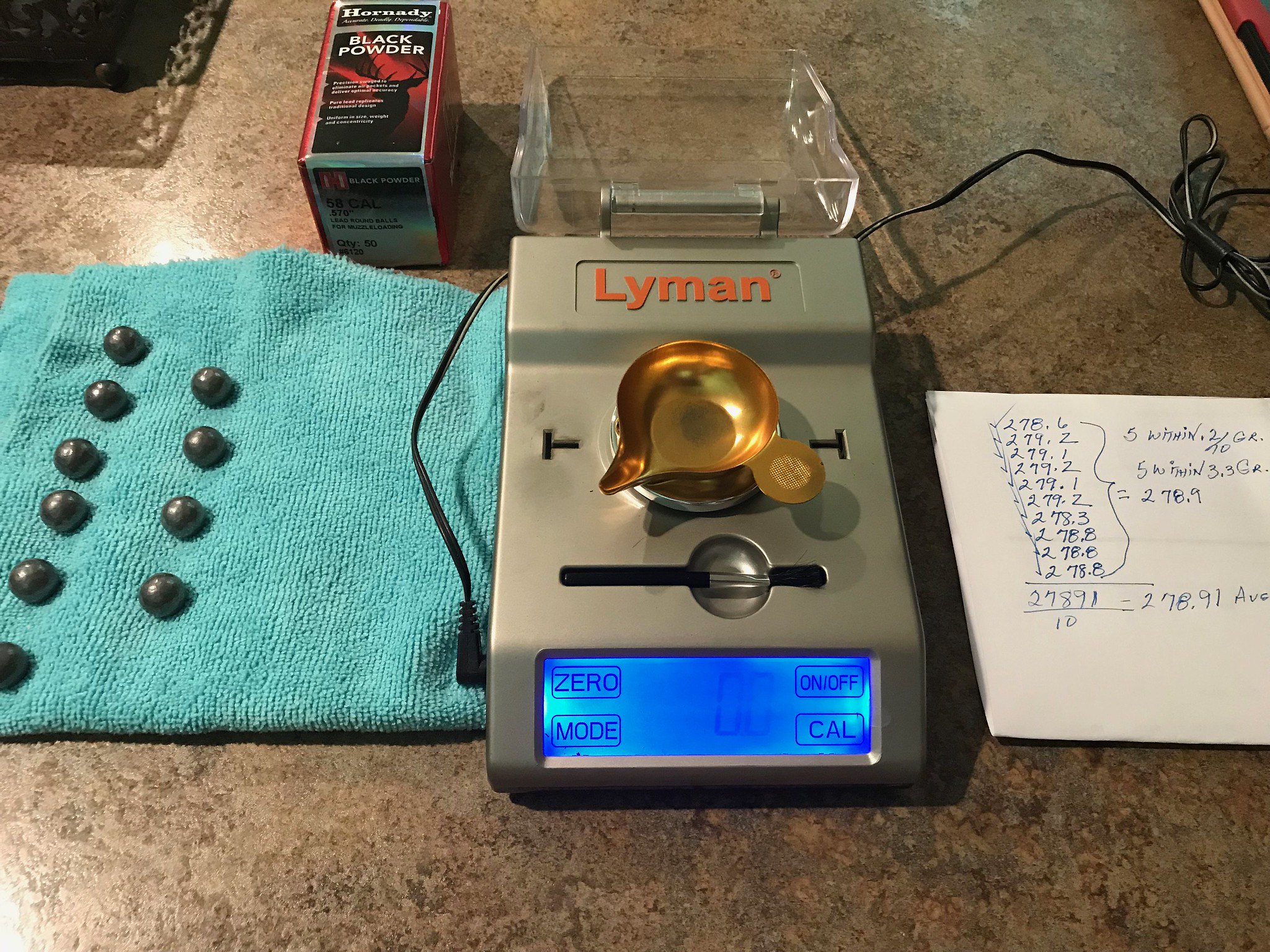Do any of you weigh your cast RBs and group them for shooting?
Do you find that it improves accuracy?
Do you find that it improves accuracy?

 Untitled by Sharps Man, on Flickr
Untitled by Sharps Man, on FlickrI have done it but I was surprised that my accuracy was pretty much the same with either? If I was as annalDo any of you weigh your cast RBs and group them for shooting?
Do you find that it improves accuracy?
My .54 balls weigh 226 grains on an average only varying 2 to 3 grains at the extremes. I really can't tell any difference in the accuracy one from another? I still will do it when I am searching for minute of angle groups at a 100 yards. It has been a long time since I could .Do any of you weigh your cast RBs and group them for shooting?
Do you find that it improves accuracy?
Same here, haven't weighed any in years.In my early days when I was an obsessed 'X' hunter I weighed to 1/10th of a grain. Later I eased up a bit to 1 grain. Then later I simply examined my balls for air pockets, etc. and kept all that looked good without weighing. Accuracy unchanged.
Enter your email address to join: